“Scrap learning” refers to any corporate learning and training that doesn’t end up applied to work. In the training and work education worlds, there is a ton of scrap learning. You’ve most likely experienced scrap learning yourself.
Unfortunately, everyone has.
Not only does scrap learning waste time, it wastes money - not to mention bringing down morale by subjecting employees to yet another redundant lecture. If you get into a routine of employees expecting corporate learning to be inapplicable, scrap learning can weaken the legitimacy and efficacy of your entire learning and development program.
Below are some ideas for how to avoid scrap learning in the workforce and how to start proving corporate training is a benefit, rather than a curse; but first, let’s delve even deeper into the scrap learning problem.
Scrap Learning by the Numbers
Depending on the study, scrap learning is anywhere from 50% to 90% of corporate learning; but the real takeaway from these numbers is that scrap learning is everywhere. The average employee in 2015 spent 32.4 hours in corporate training and the cost of that training was $1229. Apply the 50% to 90% typical of scrap learning to those figures and you can see how much time and money is wasted just on a single employee.
How is it possible that these percentages could be so high? Well, it actually shouldn’t be so surprising. Think back to traditional corporate learning lectures you yourself have witnessed. How much of the information in the lecture did you already know? Chances are, something like 50% at least. By avoiding redundant information, you can reduce scrap learning to a fraction of what is in traditional corporate learning.
Adaptive Learning Reduces Scrap Learning by Only Teaching What’s Important
Traditional forms of corporate learning and e-learning follow a set curriculum, test employees based on this never-updated curriculum, and then assign passing or failing grades. But this method doesn’t take the individual strengths and weaknesses of employees into account.
In the Adaptive Learning system, the algorithm examines how much each employee does and doesn’t know, and asks them risk-free questions designed to identify exactly which areas of study they either struggle with or know like the back of their hand.
Once these areas are identified, learning can be tailor-made according to each employee’s needs; this results in less scrap learning overall because the employee only spends time on what they need to know, not something they’ve known for years and are already experts in.
The Benefits of Reducing Scrap Learning
Because scrap learning saps your employees’ time and creates training expenses, ridding the classroom of scrap learning saves time and money. It’s pretty much as simple as that.
Too many employers view employee training as an expense rather than an investment in the future; but part of the reason for that view is so much training time is wasted teaching employees things they already know. Take away the waste and it becomes much easier to see corporate training as a benefit rather than a drain. Employees, too, will be much more willing to go through training if it doesn’t bore them and they learn important skills that will help them in their careers.
For More Information on Adaptive Learning and What It Can Do to Eliminate Scrap Learning, Download This Infographic
References: https://www.td.org/insights/how-much-is-scrap-learning-costing-your-organization









